 Last weekend, we moved the sheep back down to the pasture to graze. The move almost went without mishap, except that at one point, the sheep drifted down to the end of the driveway by the road, and noticed the green alleyway by the tree farm. They decided to start strolling in that direction. I wasn’t able to get down there very fast with Maggie, and because that area is unfenced and close to the road, I didn’t want to send Maggie down there by herself.
Last weekend, we moved the sheep back down to the pasture to graze. The move almost went without mishap, except that at one point, the sheep drifted down to the end of the driveway by the road, and noticed the green alleyway by the tree farm. They decided to start strolling in that direction. I wasn’t able to get down there very fast with Maggie, and because that area is unfenced and close to the road, I didn’t want to send Maggie down there by herself.
As I carefully pursued them with Maggie, they drifted further and further, until they finally stopped, three properties down, where the properties border an elevated road. Fortunately, they stood there in indecision long enough for me to get around them with Maggie and nudge them back home. My heart was in my throat though, partly from running all that way, and partly because I feared that if they got onto the road, or Maggie disobeyed me and rushed to try to bring them, we could have had a disaster!
The sheep are happily back in their graze now. The first few nights, I fence the sheep in an inner circle of hotwire, and the dog in an outer circle. The dog was very fearful about the move (Kirk actually carried her the whole way down to the field, because she cannot yet walk on a leash!). I was worried I wouldn’t be able to catch the dog once she was loose in that big area, and frightened.
But, after a few days, they all settled in. So, now the sheep are inside the hotwire, and the dog has the rest of the pasture to roam. The lambs are safe from the dog, and coyotes would have to make it past the dog, and the hotwire, to get to the sheep. Now, I have to move the hotwire rectangle every week or so to put the sheep on fresh grass, and let the worn spots rest.
This morning I moved the wire, in the photo you can see the left side is muddy and eaten down, and the right side is fresh green grass. The Premier Electronet fencing is all that it promised to be- easy to move and very effective at keeping in the sheep.
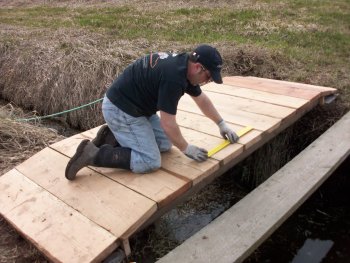 Kirk has been working on this bridge the last few weeks. It is made out of more barn wood-these boards were floor joists from the second story. The boards are huge and heavy, 2×12″ true dimension lumber, and sometimes bigger. The wood from the barn is funny, we know it was milled on site, and there are many inconsistent dimensions of lumber. When building something like this, it’s necessary to pick through the boards to find ones that are the same.
Kirk has been working on this bridge the last few weeks. It is made out of more barn wood-these boards were floor joists from the second story. The boards are huge and heavy, 2×12″ true dimension lumber, and sometimes bigger. The wood from the barn is funny, we know it was milled on site, and there are many inconsistent dimensions of lumber. When building something like this, it’s necessary to pick through the boards to find ones that are the same.
 I liked my original A-frame
I liked my original A-frame 
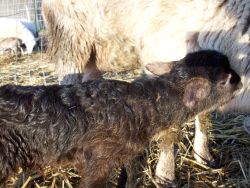
 I’m not keen about tail docking on any animal, since it is a true amputation, and I have concerns about what it does to the animal’s physiology and whether they suffer from phantom limb syndrome. In sheep, short tail docking is definitely linked to greater incidence of rectal prolapse.
I’m not keen about tail docking on any animal, since it is a true amputation, and I have concerns about what it does to the animal’s physiology and whether they suffer from phantom limb syndrome. In sheep, short tail docking is definitely linked to greater incidence of rectal prolapse.
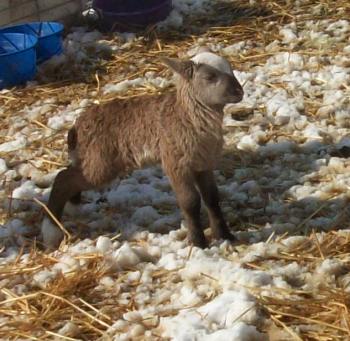



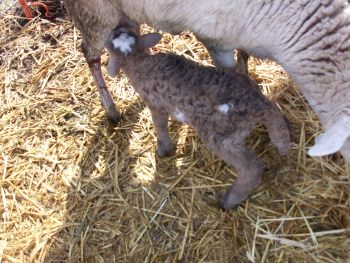
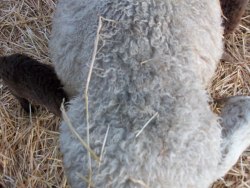
 I built this poultry feeder A-frame a week or so ago. I used old barn wood this time. I don’t often find ways to recycle the barn wood, because it’s so dimensionally gigantic, dense and heavy compared to modern lumber, that even the tiniest structure weighs too much. Right now, we want everything to be move-able since we don’t know where all our permanent structures are going to go. But, this worked ok: made from barn siding and roof pieces, I think it “only” weighs about 50 pounds!
I built this poultry feeder A-frame a week or so ago. I used old barn wood this time. I don’t often find ways to recycle the barn wood, because it’s so dimensionally gigantic, dense and heavy compared to modern lumber, that even the tiniest structure weighs too much. Right now, we want everything to be move-able since we don’t know where all our permanent structures are going to go. But, this worked ok: made from barn siding and roof pieces, I think it “only” weighs about 50 pounds!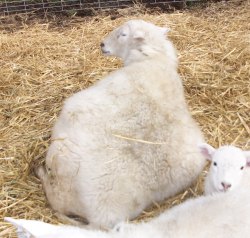 Look at this girl! This is #33, the quirkiest, dorkiest, homeliest of our sheep; and also our favorite! She doesn’t take any guff from the dogs, and if there is Border Collie anywhere outside, #33 sticks to our legs like glue. She knows where the safety zone lies!
Look at this girl! This is #33, the quirkiest, dorkiest, homeliest of our sheep; and also our favorite! She doesn’t take any guff from the dogs, and if there is Border Collie anywhere outside, #33 sticks to our legs like glue. She knows where the safety zone lies! Last week I received a large order from
Last week I received a large order from  Here is the electric fence charger. It’s a rechargeable 12-volt battery, and the solar panel is more of a “booster” to help get a couple more days out of each charge. It’s supposed to last a week or two between chargings. The dog learned right quick to stay away from it, she is very afraid of it. And, the sheep are really too mellow to even challenge it. So, when I’m around, I can leave it turned off. But, at night, hopefully it’ll not only ensure the sheep and the dog stay in, but should keep the coyotes out.
Here is the electric fence charger. It’s a rechargeable 12-volt battery, and the solar panel is more of a “booster” to help get a couple more days out of each charge. It’s supposed to last a week or two between chargings. The dog learned right quick to stay away from it, she is very afraid of it. And, the sheep are really too mellow to even challenge it. So, when I’m around, I can leave it turned off. But, at night, hopefully it’ll not only ensure the sheep and the dog stay in, but should keep the coyotes out.